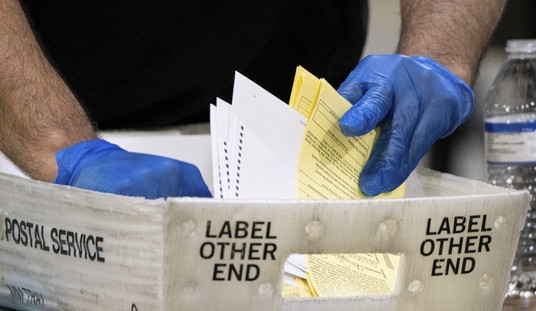America’s movers and shakers can’t seem to stop ogling Chinese authoritarian chic. While few would defend China’s repressive political system, numerous politicians, business executives, and pundits bow before China’s state-directed capitalism, equating authoritarianism with efficiency and ruthlessness with enlightenment.
At the heart of this ogling lies an admiration for Beijing’s ability to undertake large projects far more quickly than America’s democratic gridlock would ever allow. In reality, Chinese central economic planning generates massive inefficiencies and imposes drastic human costs. Below is merely the short list.
Infrastructure
As a candidate in the 2008 presidential election, Senator Barack Obama bemoaned the crumbling infrastructure of the United States and noted that China’s state-directed infrastructure spending had produced ports, trains, and airports that were “vastly the superior.” Since then, Westerners have consistently pointed to the rapid construction of China’s high-speed rail system, now the most extensive in the world, as Exhibit A of China’s infrastructure prowess.
In fact, going high-speed in China has highlighted endemic corruption and created unhappy customers. In February, Liu Zhijun, China’s minister of railways and architect of the country’s $300 billion high-speed rail network, was fired and arrested amid accusations of wheeling and dealing in bribes of $155 million — and keeping 18 mistresses.
Since then, concerns about shoddy construction and safety have surfaced.
China’s state media once trumpeted the trains’ top speed of 210-236 mph as the fastest in the world, but the trains were never designed to run above 186 mph. In April, they were slowed accordingly. Caxin.com, the website of China’s leading business and finance publication, reports that the “high-speed bubble” was all a “naked, systemic lie,” concocted and fanned by the Railways Ministry.
Meanwhile, most Chinese citizens cannot afford to ride the shiny new trains and have opted instead to pack into buses for their long-distance travel.
State Ownership
Infrastructure is not the only aspect of Chinese government planning for which Westerners get starry-eyed. Senior business executives, in particular, can get downright obsequious about the superiority of China’s government leadership. Writing in the Wall Street Journal on July 9, Robert Herbold — a retired COO of Microsoft — cited Chinese bureaucrats’ penchant for reciting the goals of China’s new five-year plan as evidence of such superiority.
But Chinese government planning hardly equals a winning investment. According to a recent report by the Unirule Institute of Economics, an independent think tank in Beijing, the average return on equity of state-owned industrial enterprises in China was much lower than that of their non-state counterparts between 2001 and 2009.
When preferential government subsidies (such as free land and cheap loans) for the state firms are factored in, the real return on equity registers at an embarrassing -1.47%.
Moreover, 70% of all net profits made by China’s centrally owned enterprises in 2009 are derived from merely ten companies that have been bestowed heavy market advantages by the state. The unflattering flipside, observes Zhang Jialin of the Hoover Institution, is that a vast majority of the remaining state-owned companies are poorly managed or suffer from overcapacity.
Climate Change
But even inconvenient numbers cannot deter New York Times columnist Thomas Friedman from extolling the “enlightened” leadership of Chinese autocrats for imposing “the politically difficult but critically important policies needed” to embrace green technology and combat climate change.
Yet where gargantuan government investment has created rapid growth in China’s renewable energy industry, it has also resulted in bottlenecks and overcapacity. For instance, China now boasts the world’s largest wind capacity — but approximately one-third of its wind farms stand idle at any given time, unable to connect to the electricity grid.
In addition, Chinese leaders never hesitate to convey the callousness of their approach. Zhao Baige, vice minister of China’s National Population and Family Planning Commission, has eagerly trotted out the country’s one-child policy as an example of the bold and swift action on climate change that China has bequeathed to the world. In December 2009, Zhao noted that China witnessed 400 million fewer births between 1978 and 2007, which “converts into a reduction of 1.83 billion tons of carbon dioxide emission … per annum.”
Financial Prowess
Clearly, such “enlightened” leadership is not for America, or any liberal democracy, to emulate. Even so, President Obama warned in his 2011 State of the Union address that China’s meteoric economic rise threatens to leave America in the dust and exhorted Congress to substantially increase federal investments to increase American competitiveness.
Such thinking ignores the serious problems lurking beneath China’s economic glitz and spending onslaught. To combat the financial crisis, Beijing pushed out a 4 trillion yuan ($619.1 billion) stimulus package and encouraged lending by state banks that totaled, by some estimates, 20 trillion yuan ($3.1 trillion) in 2009 and 2010. Two years later today, Beijing is staring at piles of bad debt that may imperil China’s broader financial health.
Much of the problem stems from the fact that China’s local governments turned out to be some of the most avid consumers of state lending. Though facing legal constraints on borrowing from state banks, they created financing vehicles to serve as intermediaries, incurring off-the-books liabilities and using the funds largely for infrastructure projects that they could not afford.
Earlier this month, Moody’s Investor Services estimated that China’s local government debt totaled over 14 trillion yuan ($2.17 trillion), more than 35% of the country’s 2010 GDP. The Wall Street Journal reports that Beijing agreed on May 31 to assume as much as $436 billion in bad loans made to local governments. Though the figure is only about half of the U.S. Troubled Asset Relief Program of 2008, it amounts to a far bigger percentage of China’s GDP.
China’s central regulators are now attempting to stem local profligacy, but their mad scramble should remind the world that swift and decisive policies pushed by the full weight of authoritarianism can sow swift and decisive problems.
Internal Contradictions
In the end, all of China’s problems cannot take away from the country’s breathtaking economic growth and liberalization. Yet China’s state-directed capitalism presses forward without any political accountability and imposes inherent obstacles to the free market. The country continues to produce not just persecuted religious believers, jailed political dissidents, and a censored media; it is also home to immense waste and jarring inefficiencies. As a U.S.-trained economist turned Chinese official observed recently, China’s economic inefficiencies are caused by its political contradictions.
Instead of ogling Chinese authoritarian chic, Americans would do well to recognize the same. Meeting China’s rising global influence requires sensible policies. Fashioning them would first require seeing China and its limitations more clearly.









Join the conversation as a VIP Member